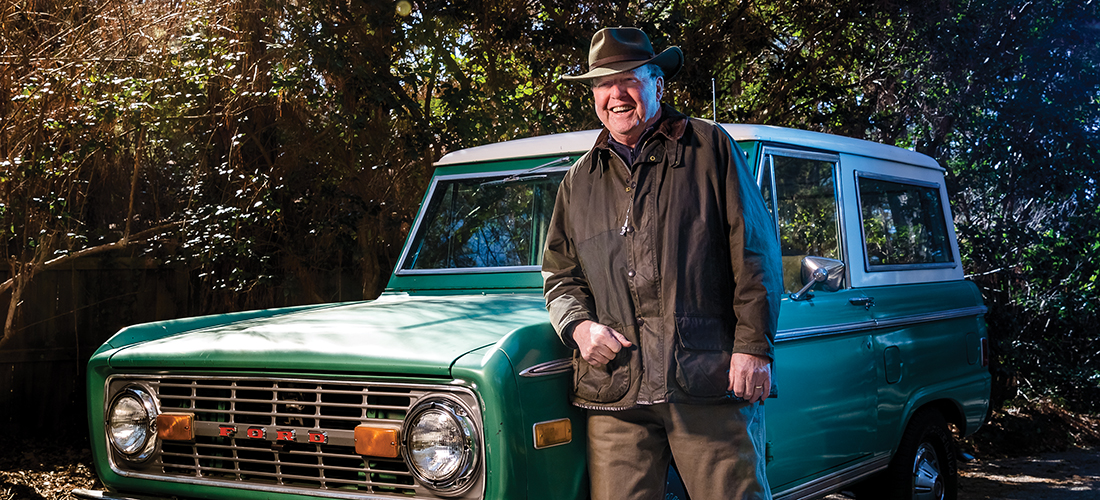
Gearing Down
February is a month to take stock
By Tom Bryant
February, according to many of my outdoor friends, is the dregs of winter. If you enjoy the great outdoors, there’s not much you can do that month. Most hunting seasons are closed, and it’s too cold to fish. If you play golf, a sunny day will let you on the course, if it’s not frosted over in the morning. But I’m afraid golfing never became one of my outdoor pursuits. I’d much rather be pursuing birds than following a little round ball. That’s not to say golf’s not a great sport, I’ve just never tried it. Too many other things appealed to me at a young, formative age.
So what to do in February? I use this down time to sort through and try to organize winter gear that I’ve accumulated over the years. I believe it was Gene Hill, the famous author and columnist for Field and Stream, who once stressed the importance of acquiring sufficient items for days afield. In essence, he said if you find an important piece of gear that fits your requirements to a T, you’d better buy two, because the gremlins, those who often throw curves to befuddle us folks who appreciate the finer points of outdoor gear, will quit making it.
While going through hunting shirts that are hanging in a closet I dedicated to hunting and fishing apparel, I realized that Mr. Hill’s premise was exactly right. I have two heavy chamois shirts that I bought from a clothing outlet in Burlington about 30 years ago. Over time they have become buttery soft and a pleasure to wear. One is khaki, the other dark green. I wear them mostly when duck hunting, and sometimes I’ll slip one on when I’m just hanging around the house. They are especially comfortable when I’m lounging by a blazing fire. I have other shirts designed for outdoor wear and they suffice on most occasions; but when I really want to be comfortable, I’ll pull out my old favorites.
There are also a couple of wool mackinaw trousers; well, one is a pair of trousers and the other overalls. When all the red you can see on the outdoor thermometer is a little bit at the bottom, these are the most important pieces in my closet. I’ve spent many a day in a frozen duck blind, warmed by these amazing garments that have only gotten better over the years.
My problem is I keep trying the new clothing dedicated to hunting and fishing, but nothing seems to come up to the high standards set by my old stuff. Maybe it’s because I’m used to the old and haven’t given the new a real chance; and maybe it’s because the old is broken in and well worn, but I’ve tried, and here’s a recent example. I have several other chamois shirts, some that I’ve purchased and some that were gifts. Initially, they were stiff as cardboard and after several washings they’ve shrunk to a size that would fit a 14-year-old. They are now in a pile, destined to hang on racks at Good Will. Hopefully, a 14-year-old will be able to use them.
Coats seem to be cut smaller, T-shirts and underwear almost disappear after a few washings, and trousers have become restrictive and uncomfortable. I really don’t mean to sound like an old curmudgeon, disappointed in new gear. There are some items that more than fit my strict standards.
L.L. Bean still makes good stuff. I have a pair of their boots that I’ve worn forever, and the good thing is when they are on their last legs I can send them back to the company and they will rebuild them. Same with Barbour coats. I’ve had one of their classic jackets for at least 20 years. I ripped the coat while grouse hunting in Michigan and thought it was a goner; but at the suggestion of a good friend, I sent it back to the factory and they repaired it almost as good as new.
While on a recent duck hunt to Mattamuskeet, my hunting buddies and I commiserated about the lack of well-built hunting gear and how our choices in apparel are decreasing. But more importantly, so are available localities for hunting and fishing. I’ll be the first to admit that we have seen a lot of sunrises in our sporting endeavors, as our ages will attest; but in the last few years, the decline of hunting space has diminished alarmingly. Black Creek Swamp, where I cut my hunting teeth on squirrels, is now bordered by a country club with huge houses and an 18-hole golf course. Now the creek is just a directed stream with rock borders, not a decent locale for any self-respecting squirrel.
Four hundred acres of some of the best habitat for deer, turkeys, ducks and otters plus a creek full of bream and even a bass or two is a place I hunted and fished for over 20 years. Unfortunately, the land has been cut up into 10-acre mini-farms and sold to city folks who like to think they’re living in the country. Also suffering the same fate is Plimhimmon Plantation on the banks of the Tred Avon River in Maryland. For 15 years, we goose hunted that magnificent farm and have wonderful memories I wouldn’t trade for anything.
My companions in the field and I could easily say, what the heck? We’ve seen it and done it and it’s unfortunate it’s gone, but what can we do? I have what I think is a good answer to that question: As geezers, we can continue to talk about it. As long as we do, those times and habitats will not be forgotten, and maybe some of them can even be reclaimed.
There is a bright light on the horizon, though, and that’s the place where I go every winter to replenish my soul: Hyde County and Lake Mattamuskeet. The little town of Engelhard steps right out of the past. Located on the Pamlico Sound, the quaint fishing and farm village remains as it was many years ago. Karen and Dale Meekins are owners and hosts of the Hyde County Lodges, where we hang our duck-hunting hats and are as hospitable as you would expect them to be. Their families go way back in the area and are well known and respected as folks who honor the land and wild country and waters where they have made their home. I enjoy their company.
Also, I have made a tradition of stopping by Gibbs Country Store in the morning as I’m leaving the area. It steps right out of the past, potbelly stove and all. I always get a cup of coffee from the never empty coffee pot, fill it half full and check out at the old register. Mr. Gibbs is usually there and will say, “That’ll be 50 cents.” He’ll then look in the cup. “Nope, you only got half a cup, give me a quarter.”
As long as I’m able, I’m going to continue my annual trek to Hyde County. The visit never fails to improve my outlook for the future of the great outdoors. PS
Tom Bryant, a Southern Pines resident, is a lifelong outdoorsman and PineStraw’s Sporting Life columnist.





